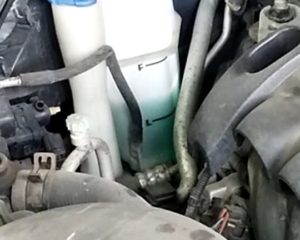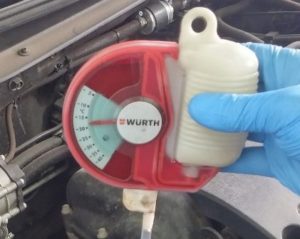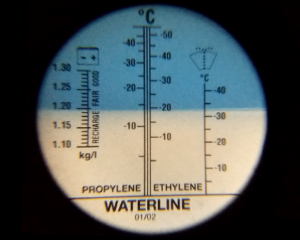Engine coolant check
A low coolant level or freezing of the coolant can cause the engine to overheat, therefore, the coolant level, condition, and freezing point are periodically checked. The engine cooling system depends on the coolant that transfers excess heat from the engine to the radiator. Engine overheating can cause serious damage.
Distilled water with a freezing point of 0 °C is used for the coolant. In winter, when the temperature is below 0 °C, the water freezes and expands. In this condition, it may cause the engine block, head, radiator, and other parts of the engine and cooling system to break. Antifreeze is used to protect the refrigerant from freezing. Depending on the composition of the mixture of antifreeze and water, the coolant has its freezing point. Frequent refilling of water into the cooling system dilutes the mixture and raises the freezing point of the coolant. Therefore, besides the level, the freezing point of the coolant is also measured. Measurement can be done with a hygrometer and a refractometer. If the freezing point is estimated to be insufficient then it should be amplified by adding antifreeze to the refrigeration system.








